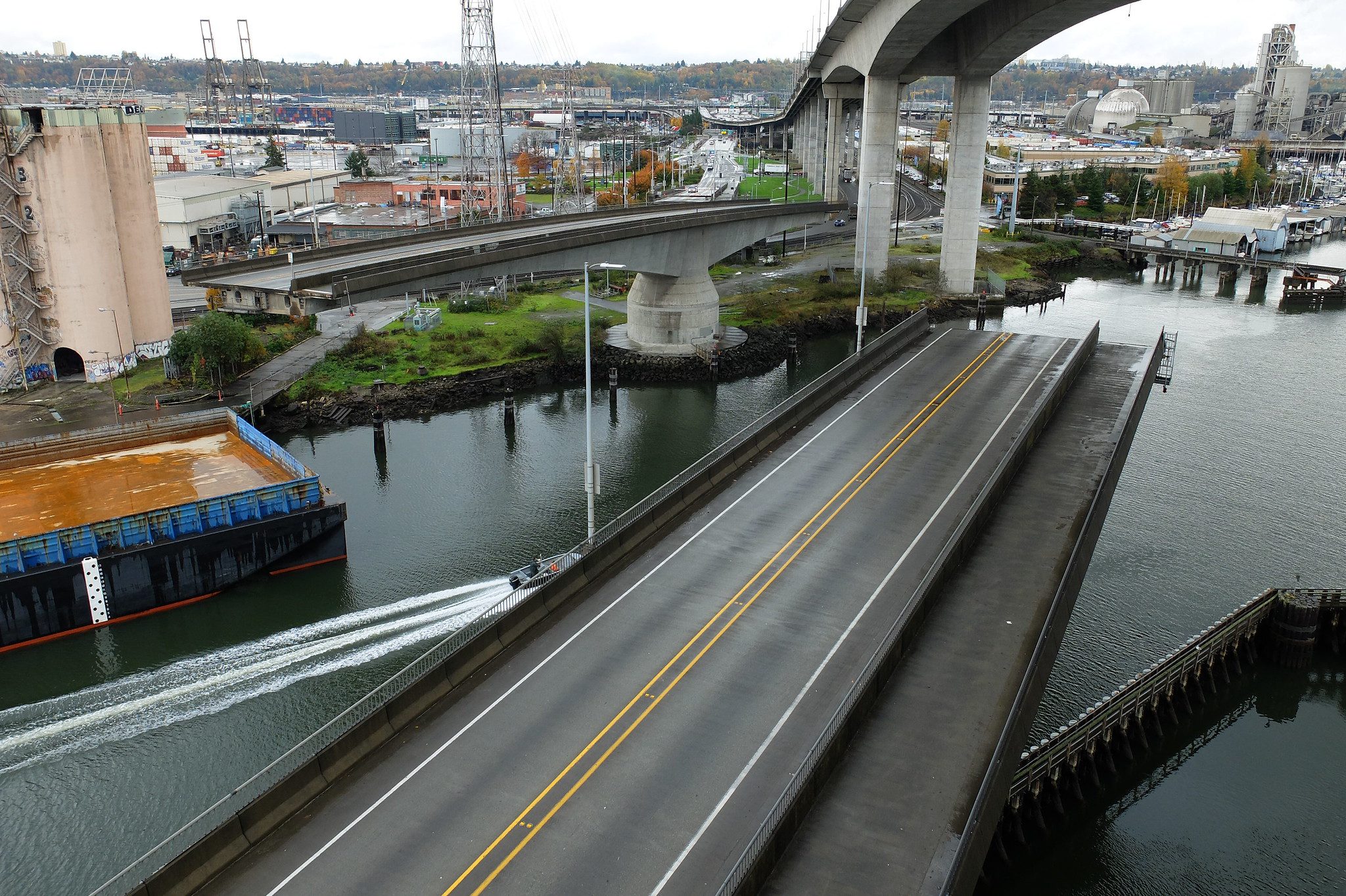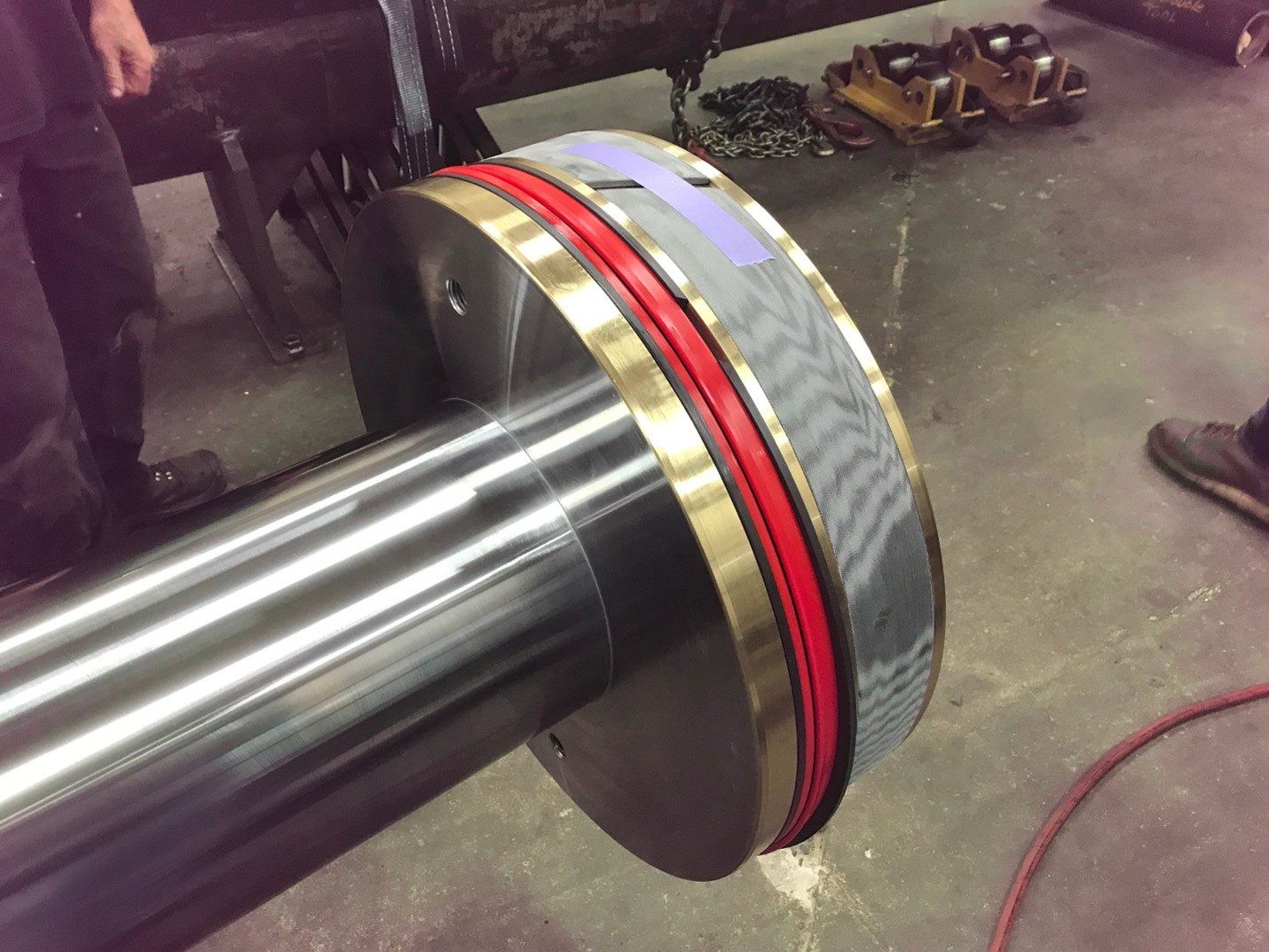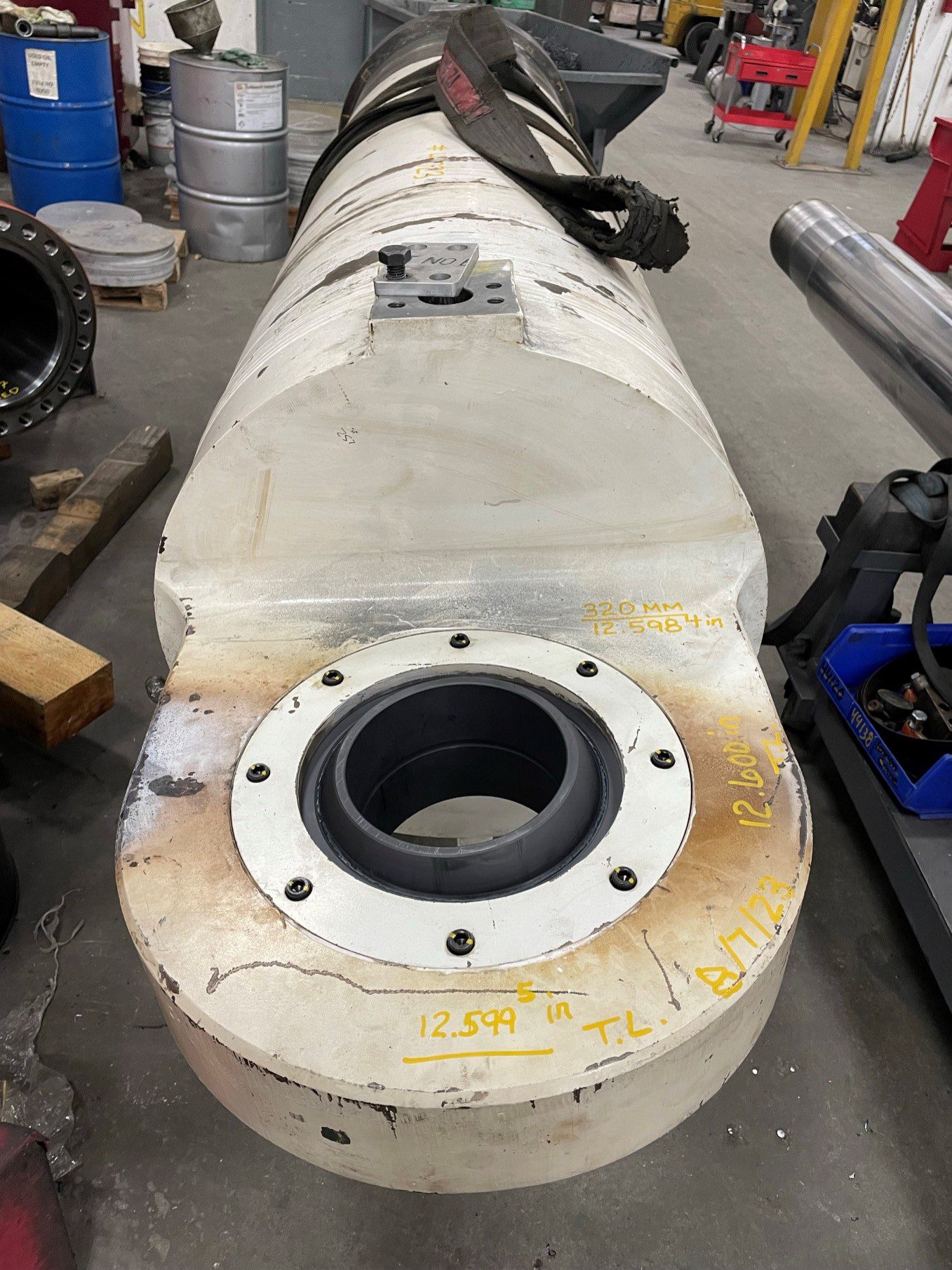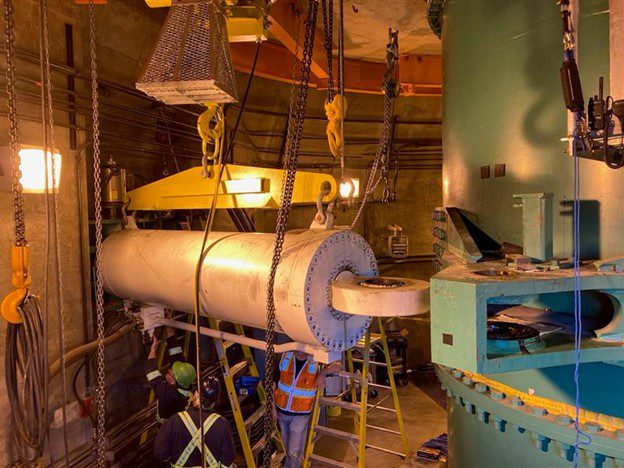 The Spokane St Swing Bridge (low bridge) as it opens for boat traffic. Photo credit: SDOT
The Spokane St Swing Bridge (low bridge) as it opens for boat traffic. Photo credit: SDOT Blog stats: 650 words | 3-minute read
Following the successful reinstallation of the low bridge’s turn cylinder that we removed earlier this year, the Spokane St Swing Bridge (low bridge) reopened on Tuesday, October 10, to people walking, biking, rolling, and driving!
We closed the low bridge between October 7-10 to all traffic. During this time, we completed our planned maintenance work ahead of schedule. Our bridge maintenance crew used their experience removing the turn cylinder earlier this year to maneuver it back into place more easily.
Next year (2024), we’ll reinstall the refurbished cylinder we removed during the most recent closure, and then rehabilitate the two remaining turn cylinders in the west bridge pier. Check out the photos below for some highlights from the removal and reinstallation work.
Turn cylinders push and pull on the lift cylinder to rotate the bridge span, allowing it to open and close. Earlier this year, one of the east pier’s turn cylinders was damaged when the piston head became stuck. When the unexpected damage occurred, preparations to overhaul all four of the bridge’s hydraulic turning cylinders were already underway as part of our comprehensive repair and maintenance efforts, which allowed us to complete repairs sooner than if we had been starting from scratch. Our bridge maintenance crews, along with our team of design and repair experts, redeveloped a part of the turn cylinder so that this type of malfunction is much less likely to occur in the future.




What’s next
Over the next two years, additional short-term closures will be required as part of our ongoing preventative maintenance work on this bridge. That means that in the future, the low bridge will be closed again to people walking, biking, rolling, and driving.
The next step in our preventative maintenance process is upgrading the control and communications system. We will share more details about the timing of this upcoming closure as planning efforts continue.
Transit GO Rewards update
For people using the Transit GO Ticket app to earn free bus and water taxi trips during the low bridge closure, please note that the reward code and its associated transit fares campaign expired on October 10 (when the low bridge reopened).
Any points already earned through this code won’t expire but will become inactive after six months of inactivity on the Transit GO app rewards tab. At the end of each month, if your status remains inactive, 300 points will be deducted from your account and returned to the provider.
All other rewards campaigns within the Transit GO app are still available to you if you’re interested in more ways to earn rides – information is available in the app for your use and on the King County Metro Transit GO web page. We appreciate the support of the voter-approved Seattle Transit Measure for helping fund these transit trips during the low bridge closure and for the collaboration of our partners at King County Metro.
Here’s how you can stay informed:
- Email: westseattlebridge@seattle.gov
- Phone: (206) 400-7511
- Sign up for email updates
- Visit our website